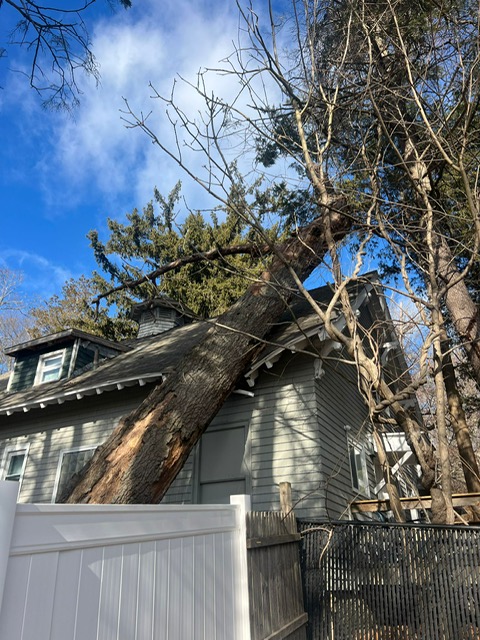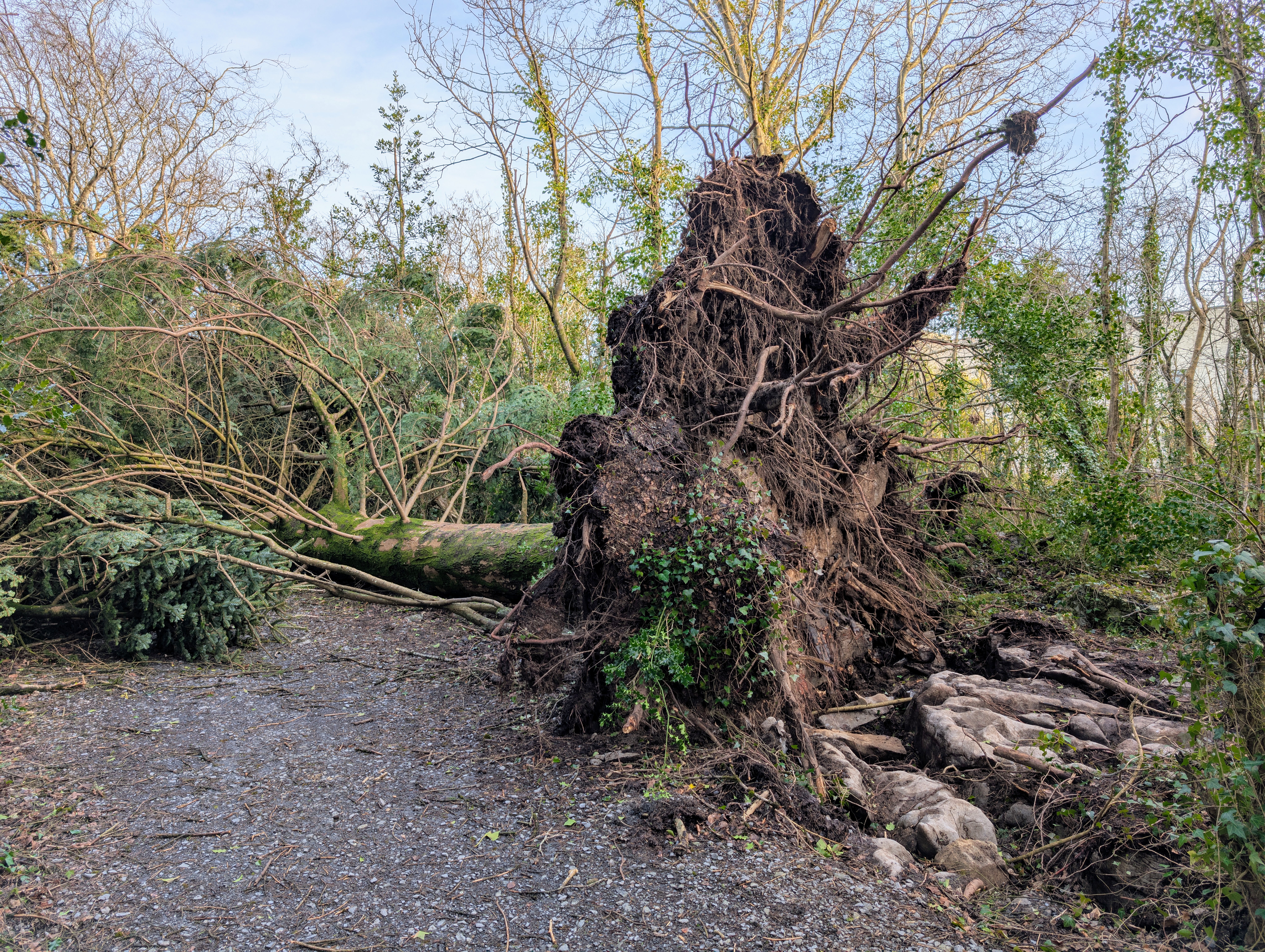Hurricane Erin: More Than Wind and Waves—Why Tree Damage Is a Real Threat
By Tree Emergency Expert
Tree Emergency Expert

One moment, it’s a typical late-summer day. The next, Hurricane Erin is churning just offshore, sending waves crashing and winds screaming down our streets. Sure, everyone’s talking about the rip currents and the giant surf. But for homeowners across Connecticut and the East Coast, the bigger worry is what those winds can do to trees
Hurricane Erin: More Than Wind and Waves—Why Tree Damage Is a Real Threat
One moment, it’s a typical late-summer day. The next, Hurricane Erin is churning just offshore, sending waves crashing and winds screaming down our streets.
Sure, everyone’s talking about the rip currents and the giant surf. But for homeowners across Connecticut and the East Coast, the bigger worry is what those winds can do to trees.
Why Trees Are a Bigger Risk Than You Think
When storms like Erin pass close by, even without landfall, they still drag fierce winds inland. And it doesn’t take a direct hit to topple a tree.
Soaked soil + strong gusts = uprooted trees.
Old, hollow, or leaning trees = snapped in half.
Branches hanging over powerlines = outages waiting to happen.
It’s not dramatic to say that a single falling tree can change your whole night—blocking your driveway, crashing onto your roof, or knocking out power to your neighborhood.
And here’s the truth: many of the trees that fail in a hurricane already had hidden weaknesses. Decay inside the trunk. Roots rotting underground. Overextended branches never pruned back. Storms like Erin just finish what was already brewing.
The Insurance Puzzle No One Talks About
A fallen tree isn’t just a mess—it’s a paperwork nightmare. Homeowners often ask: Does my insurance even cover this?
If the tree hit your home, garage, or fence, most policies will cover the damage and tree removal.
If the tree just fell in your yard without damage, coverage is less likely.
If the tree came from your neighbor’s property, things can get complicated fast.
That’s where having the right documentation matters. Photos. Dates. A professional removal invoice. It all adds weight to your claim and speeds up reimbursement.
How 1 Tree Emergency Fits In
This is where knowing who to call matters. At 1 Tree Emergency, storms like Erin are our specialty. We’ve built a network of licensed crews who can respond fast—whether it’s a giant oak across your roof or multiple downed trees across your yard.
We work directly with insurance adjusters, so you’re not stuck in endless calls and fine print.
Crews bring in the right gear—cranes, spider lifts, and heavy equipment—to handle jobs that chainsaws alone can’t touch.
And most importantly, we make sure the site is safe so you and your family aren’t left exposed to more hazards after the storm passes.
We’ve seen it all: 200-year-old maples cracked in half, pine trees slicing through rooftops, and tangled branches pulling down entire sections of powerline. Our job is to bring calm back to chaos.
What You Should Do While You Wait for Help
Stay clear of the tree.
Even if it looks stable, pressure and shifting weight can cause it to roll or collapse further.
Watch for powerlines.
If a tree is tangled in wires, treat it as live electricity—call the utility company immediately.
Take photos if it’s safe.
Documenting damage before cleanup helps your insurance claim move faster.
Protect what you can.
If safe, cover broken windows or roof sections with a tarp to prevent further water damage.
Don’t DIY dangerous removals.
Cutting the wrong branch at the wrong time can cause more damage—or worse, injury.
Erin’s Reminder: Trees Aren’t Just Scenic
Hurricane Erin is showing us, again, that storms aren’t just about the coastline. They hit homes and neighborhoods through falling trees and flying branches.
And at the end of the day, calling for professional tree removal after a storm isn’t just about cleaning up—it’s about protecting your home, your family, and your peace of mind.
👉 If you’re in the path of Erin—or any storm—remember: you don’t have to face it alone. 1 Tree Emergency is ready to step in when fallen trees turn your world upside down.
Share this article:
Related Articles

Tree Damage and Insurance Claims: What Homeowners in the U.S. Should Know After a Storm
Not all tree damage is treated the same by your homeowners insurance. In most cases, you’re covered if a fallen tree damages your house, fence, or garage — but there are exceptions. For example, you’re usually protected if a storm knocks a tree onto your roof or if a neighbor’s tree falls onto your property. However, if a dead or neglected tree comes down without hitting anything, or blocks only your yard, your policy may not cover the removal costs.

Nor’easter 2025: What CT, NJ & NY Homeowners Should Know (And How to Protect Your Trees)
This upcoming nor’easter isn’t just targeting Connecticut — it’s also expected to hit New Jersey and New York with strong winds, heavy rain, and coastal flooding. Trees near the coast or in vulnerable spots will face risks. Get your property prepared now to avoid damage.

How Do I Safely Inspect Tree Damage After a Storm?
At 1 Tree Emergency, we specialize in emergency tree services and post-storm response, so we know what to look for when assessing storm damage. This guide will help you understand how to safely inspect trees after a storm, what warning signs to check for, and when it’s time to call a professional.
Need Emergency Tree Service?
Our team of certified arborists is available 24/7 to handle any tree emergency.